iPhone 6S camera tested in depth
We test Apple's hyped-up iPhone 6S Plus camera in the real world – and get a few surprises
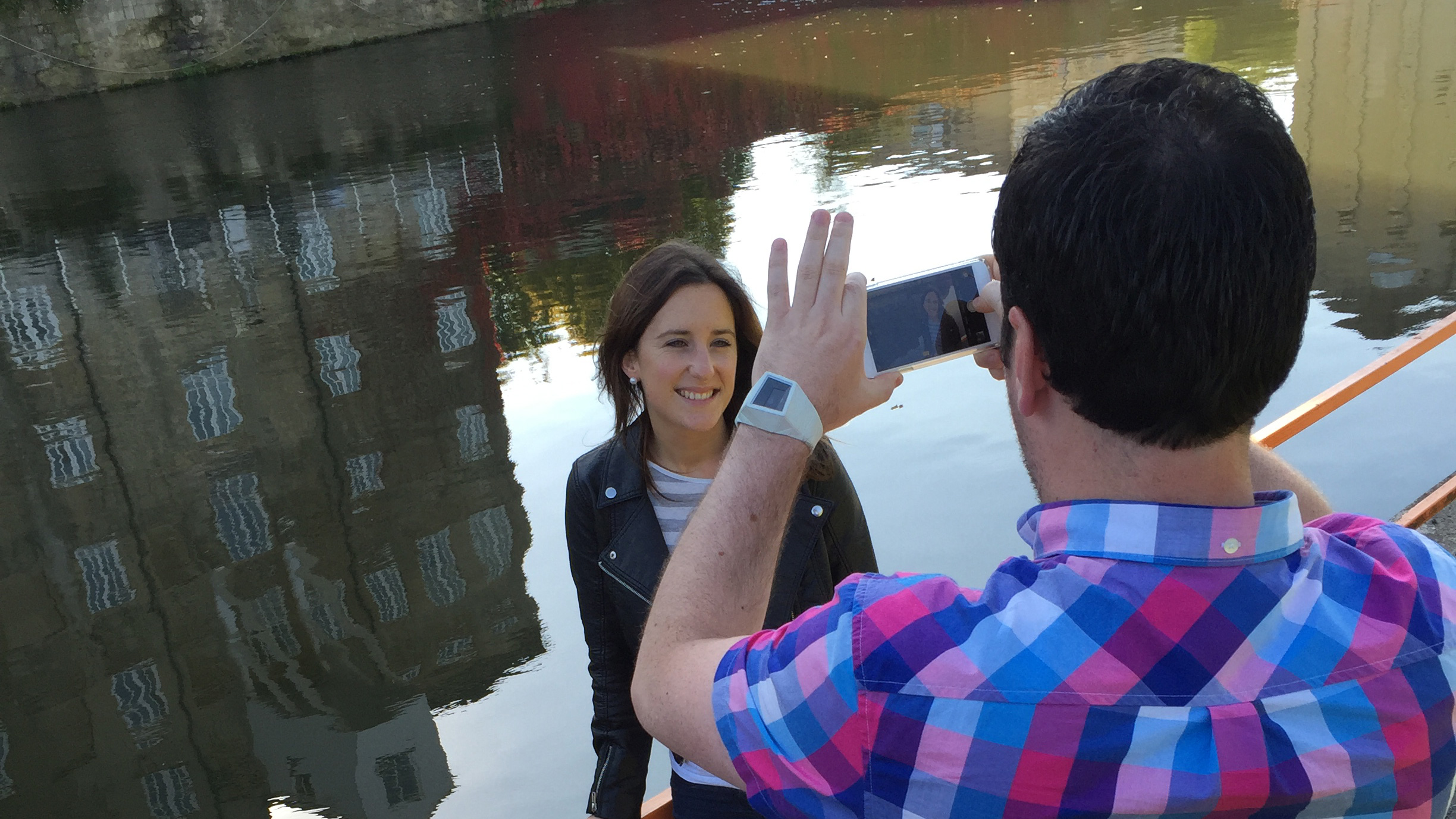
Just how good is the camera in the iPhone 6S and iPhone 6S Plus? To find out, we spent a day with professional photographer and videographer Dan Pearce, who bought his iPhone 6S Plus on its very first day on sale. We also took along an iPhone 6 Plus to shoot direct comparisons, and the results are fascinating.
Dan didn't just shoot stills. He also tested the iPhone 6S Plus's 4K video capabilities and its Slo-mo mode – this was a chance to see what a video expert could do with the iPhone's camera.
We did not test the regular iPhone 6S camera, but we would expect the results to be the same, except for one key difference. The 6S Plus has an optical image stabilizer, which will help improve sharpness in low light and reduce the need for higher ISO settings (which bring more noise). Otherwise, the lens, sensor, image processing and features are the same in both models.
The iPhone 6S also has a much better 5-megapixel front camera compared to the lowly 1.2-megapixel FaceTime camera in the iPhone 6. We'll look at this some other time, though – here, were concentrating on the rear camera, the one you'll use for everyday photography.

Click here for a full size version.
So what's special about the iPhone?
The iPhone camera has long had a reputation for being the best there is in a smartphone, even though its resolution falls some way short of its rivals.
The new iPhone 6S brings an increase in resolution – the first for some time – but only from 8 million pixels to 12. The camera in the Sony Xperia Z5 has 23 million pixels, the Samsung S6 has 16 million pixels and so does the LG G4.
Get daily insight, inspiration and deals in your inbox
Sign up for breaking news, reviews, opinion, top tech deals, and more.
But this isn't a camera comparison between the iPhone 6S, Xperia Z5, Samsung S6 and LG G4. This is an assessment of the iPhone 6S camera for photographers as a proper photographic tool, compared with other regular cameras.
It's not just about the resolution
The photography world has long since realised that megapixels on their own don't guarantee image quality. In fact, cramming more and more megapixels into small sensors (small enough to fit in a smartphone) has the opposite effect. Detail rendition may improve, with the right sort of subject, but digital noise increases and more aggressive noise reduction is needed to control it. The result – too often – is a 'watercolour' effect in fine detail and smoothing over of subtle textures. You see this a lot in high-megapixel point and shoot digital cameras, too.
Outright resolution is certainly not the only thing to look for in a camera. Despite its relatively low megapixel rating, the old 8Mp iSight camera had plenty of megapixels for online use and even moderate-size prints, and the new 12Mp camera in the iPhone 6S should be capable of bigger blow-ups. To put this in perspective, a full-bleed, full-page image in a magazine needs only 6-8 million pixels.
There's a lot more to it than that, though. Photographers will also look for high dynamic range – the ability to hold on to detail even in brightest parts of a picture – and the iPhone camera's automatic HDR mode has proved itself very effective at this in the past, combining separate exposures in an instant to extend the brightness range it can capture.
Photographers also want freedom from aberrations, including distortion (the bowing of straight lines towards the edges of the picture), chromatic aberration (color fringing around object outlines) and edge softness (where the lens's resolving power drops off towards the edges of the picture). Whether it's down to lens quality, clever image processing or both, the iPhone's existing 8Mp iSight camera practically eliminates all three of these troublesome image flaws.
iPhone 6S sample images
These were all taken on Dan's iPhone 6S Plus.

Click here for a full size version.

Click here for a full size version.
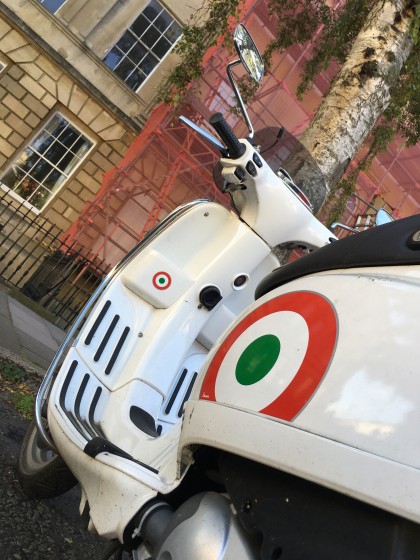
Click here for a full size version.
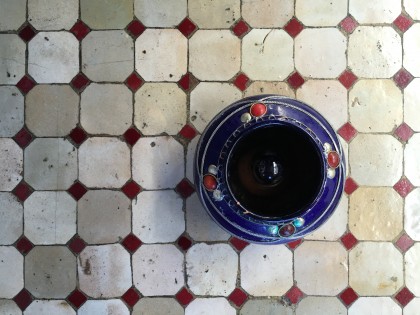
Click here for a full size version.

Click here for a full size version.
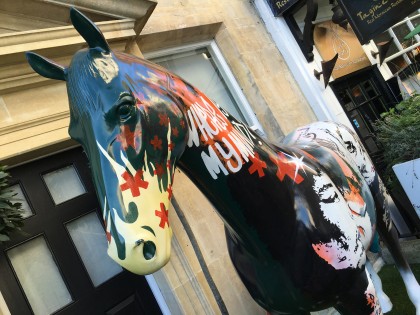
Click here for a full size version.
The built-in camera app
The iPhone camera app pulls off a similar trick, appearing basic on the surface but proving capable of great results and unexpected levels of control. There are plenty of other really good camera apps to choose from with more features and a wider range of filters, but we've concentrated on the built-in camera app to show what it can do.
The Auto HDR function is just one of its features. It also has an LED flash which can be used to illuminate subjects in the dark, though only at close range, and which produces a warmer, slightly softer light than the cold, harsh flash units in compact cameras.
It's possible to set the focus and exposure for one particular part of the scene by tapping on the screen, and you can tap and hold to lock the exposure and focus completely, even for a series of shots.
Photo modes
The standard Photo mode shoots 12Mp images in a 4:3 aspect ratio, but there's also a Square mode for Instagram style shots, and a set of eight effects filters for creating anything from a black and white 'Noir' effect to retro-style fade, instant film transfer and cross process effects. Or you can shoot in the super-wide Pano mode, capturing wide vistas with a single sweeping movement of the phone.
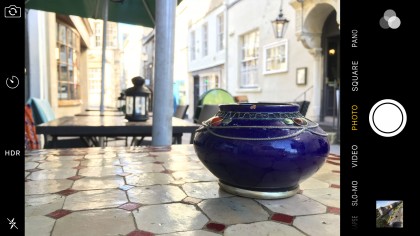
And it would be easy to overlook the new Live Photo option built into the Photo mode. This captures a regular still image, but also captures around two seconds of moving images before and after you tap the shutter release. These are shot at 15 frames per second and saved as a movie file alongside the still image – and when you press and hold the image thumbnail on the iPhone 6S using the new 3D Touch gesture, the still image comes to life in a way that really does add a new dimension to snapshots.
The video features sound equally impressive, but can a smartphone really shoot good-quality 4K video without stuttering and compression artefacts? And can the iPhone 6S really shoot smooth slow-motion 720p HD video at 240fps? Sony's brand new A7S II 4K-dedicated compact sytem camera can only achieve half that frame rate at the same resolution. We wouldn't expect the iPhone to match the Sony's quality, but that's still an indication of the video processing power crammed into the iPhone 6S.
We have an entire page dedicated to the iPhone 6S's video capabilities, but here's a quick taster. For this and subsequent videos, you'll need to choose the maximum YouTube resolution – the default playback resolution is much lower than the iPhone's.

Rod is an independent photographer and photography journalist with more than 30 years' experience. He's previously worked as Head of Testing for Future’s photography magazines, including Digital Camera, N-Photo, PhotoPlus, Professional Photography, Photography Week and Practical Photoshop, and as Reviews Editor on Digital Camera World.